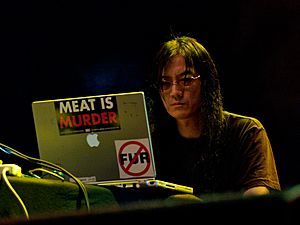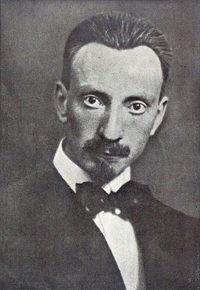Noise (music) facts for kids
Noise music is a unique kind of music where the main sounds are often what we usually call "noise." Instead of clear melodies or steady rhythms, noise music uses sounds that might seem random or harsh. Musicians who create noise music often want to explore what music can be. They ask questions like: Can a sound be music even if it doesn't have a tune you can hum or a beat you can dance to?
This type of music first appeared in the early 1910s. It's sometimes called Sound Art because it mixes ideas from both art and sound.
Contents
What is Noise Music?
Noise music challenges our usual ideas about what music should sound like. Imagine sounds like static, buzzing, scraping, or even distorted voices. These are the kinds of sounds that noise musicians use to create their pieces. It's not always about making something pleasant to listen to. Sometimes, it's about making you feel a strong emotion, or making you think differently about sound itself.
How is Noise Music Made?
Noise musicians use many different tools to create their sounds. They might use regular musical instruments but play them in unusual ways, like scraping a guitar string instead of plucking it. They also use electronic devices, like synthesizers, effects pedals, or even broken electronics, to make strange and interesting noises. Sometimes, they record sounds from everyday life, like traffic or machinery, and then change them to fit their music.
The Purpose of Noise Music
One of the main goals of noise music is to push the boundaries of what music can be. It's like an experiment. Artists want to see if sounds that are not traditionally musical can still create an experience for the listener. It can be a way to express strong feelings, or to make people pay closer attention to the sounds around them. It's also a way to explore the raw power and texture of sound itself, without the usual rules of harmony or rhythm.
History of Noise Music
The idea of using noise in music isn't new. It started over a hundred years ago!
Early Beginnings: The Futurists
In the early 1900s, a group of Italian artists called the Futurists became interested in the sounds of the modern world. They loved the noise of factories, trains, and busy cities. One famous Futurist, Luigi Russolo, wrote a paper in 1913 called "The Art of Noises." He believed that traditional music had become boring and that artists should use all kinds of sounds, including noises, to create new music. He even built special instruments called "intonarumori" (noise intoners) to make different types of noises.
Developing Sounds: Mid-20th Century
After the Futurists, other musicians and composers continued to experiment with noise. In the mid-20th century, artists started using new technologies like tape recorders to create "musique concrète." This involved recording everyday sounds and then cutting, splicing, and changing them to make new musical pieces. These experiments helped pave the way for more extreme forms of noise music.
Modern Noise: From the 1970s Onwards
In the 1970s and 1980s, noise music became more defined as a genre, especially in places like Japan and the United States. Artists began to create very loud, intense, and often harsh forms of noise music. This era also saw the rise of "cassette culture," where musicians would record their noise music on cassette tapes and share them with others, creating a strong underground community. Today, noise music continues to evolve, with artists finding new ways to use sound and technology to create unique and challenging musical experiences.
See also
 In Spanish: Noise para niños
In Spanish: Noise para niños



